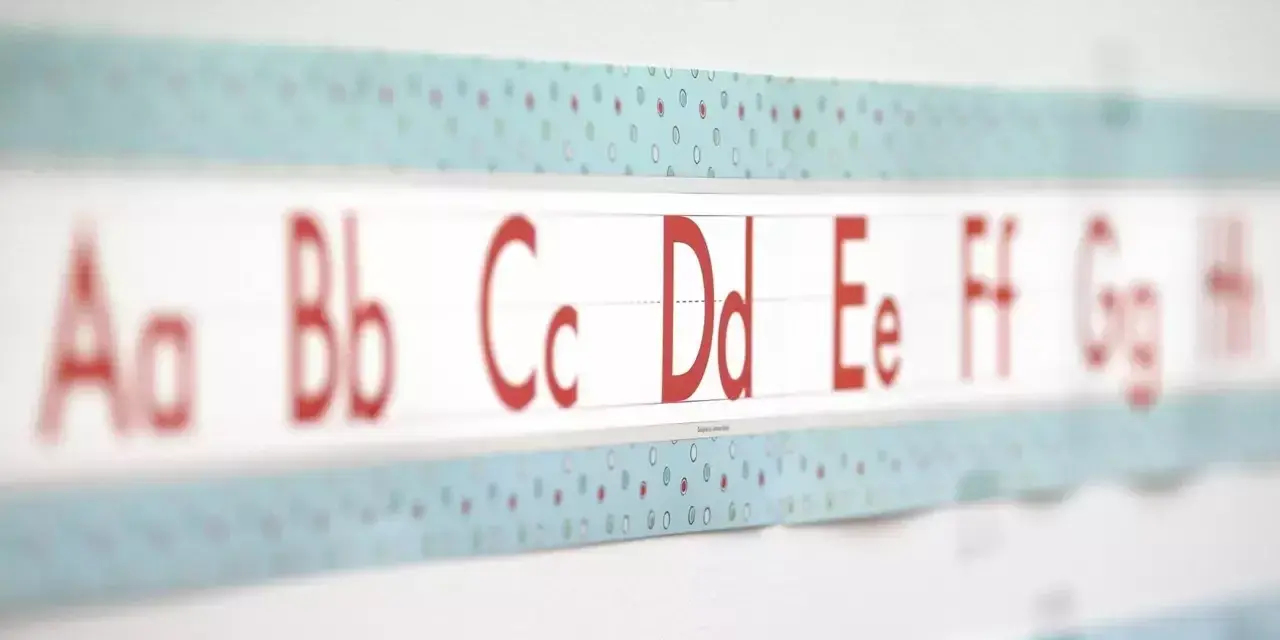Blog
·Why Do We Teach Letter Names?

Please note, in this article /a/ indicates the letter sound – a as in apple <a> indicates the letter name – a as in acorn.
If I ruled the world of literacy teaching, I would stop everyone from teaching the names!
English language is difficult to learn; we know that, with one central difficulty in learning to read and spell in English is due to our alphabetic code.
"English is the most inconsistent language in the world in terms of the consistency of letter–sound correspondences"
– Usha Goswami
In many countries, children learn to read and spell accurately in a matter of months. Comparisons between English and Austrian children showed that after one year of reading instruction, Austrian children were reading twice as fast, with 4 times the accuracy, as English children who had been learning to read for 4 years!
There is also little or no evidence of dyslexia in countries such as Italy, Spain, Finland and Austria because they have very transparent codes which have more or less a one-to-one correspondence between phonemes and graphemes.
So, my point is – We have only 26 letters but we have to learn 44 phonemes because of the complexities of the English Language. Then, on top of that because of habit and historic practice, we also learn 26 additional sounds i.e. letter names. This brings us to a total of 70 sound bites. Why?
I believe we are unnecessarily complicating an already challenging alphabetic code.
Reference is made to teaching letter names in Lyn Stone’s, Reading for Life:
“Spelling out loud requires the rapid naming of alphabet letters in a sequence. No one spells out their name to someone on the phone by sounding it out, ‘My name is /l/i/n/’. No. ‘My name is <l>-<y>-<n>’ is what we say.
"Naming letters of the alphabet is an important meta language when discussing spelling.”
But why do we have to orally spell using the names? It is much easier if we use sounds.
Yes, there would need to be clarification with the letters c and k and they share the same sound. So in order to spell my name, Katy, I would need to clarify by saying ‘kicking c’ K/a/t/y or teach the name for the ‘k’ consonant when teaching the vowel names.
Englemann et al. (1983) Teach Your Child To Read in 100 Easy Lessons, states:
“The most obvious skill the child needs is knowledge of the sound each letter makes … because letter names play no direct role in reading words. The simplest way to demonstrate this fact is to say the letter names ‘em’ ‘ay’ ‘tee’ very fast and see if they add up to the word mat. They do not. They generate something like ‘EMMAYTEE’” You can’t argue with that”.
We do not need to know letter names for reading and, if we think about it, we do not need them for spelling either.
Let’s consider the young child who is finding learning to read and spell challenging, due to weakness in his/her phonological skill. Teaching two sound bites (name and sound) for every letter surely makes it even more challenging and if that child is just at the point of getting to grips with blending sounds together to support their reading and spelling attempts, we then expect them to stop spelling cat as /c/a/t/ and spell it as <c>-<a>-<t> how is that beneficial?
One particular 15-year-old girl comes to mind. She is a wonderful student who is recognised as being dyslexic. The phonological task I was asking her to do involved syllabification. I asked her what the second syllable in condensation was. She was able to do this quickly, telling me it was ‘den’. I then asked her to spell ‘den’.
She appeared to find this quite challenging compared to the other students in the group as she took an inordinate amount of time to complete the task. At the end of the session, when others had left, I asked her if she could explain to me why she found it so difficult.
This is what she said, “I know the sound is ‘den’. I can hear the /d/ but I have to convert it to <d> and say the name aloud. Then I have to go back to ‘den’ and find the middle sound /e/ and converted to <e>
and repeat that process again for the letter /n/. If only I could say the sounds I would have no problem but I can’t do that because people would laugh at me.
Since then I’ve heard many adult learners telling me the same thing.
There is clear personal evidence that phonological awareness and knowledge of letter sounds is crucial for reading and spelling development. Let’s not focus on the extra bits that are not needed.
I would love to get grandparents, parents, preschool teachers to teach the alphabet chant to young children using the /a/b/c/ sounds rather than <a>-<b>- <c>. It is fun. Try it. Chant it using the Old MacDonald Tune. This would be hugely beneficial to the young learners.
If you feel like you want to learn more about our intervention programmes check them out here or if you’re looking for advice, get in touch.